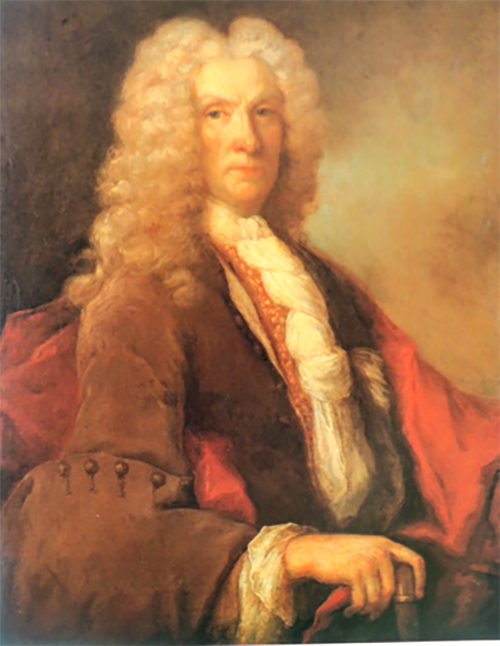
- Home Page
- Accepted
Paintings & Copies - Doubtful
Attributions - Doubtful Textual References
- Alternative
Titles - Collectors &
Museums - Bibliography
- Search Abecedario
- Watteau &
His Circle
X. Portrait: Antoine Crozat, Marquis du Châtel
Entered June 2019

Oil on canvas
81 x 65 cm
Paris, Bentinck-Thyssen Collection
PROVENANCE
Paris (?), collection of comte de Saint Charbrais.
Rechnitz, Schloss Rohonc; The Hague; Lugano, Schloss Rohoncz, collection of Baron Heinrich Thyssen (1875-1947; industrialist).
By descent to baronne Gabriella Bentinck-Thyssen and baron Adolphe Bentinck.
EXHIBITIONS
Munich, Neue Pinakothek, Schloss Rohoncz (1930,) cat. 349 (Watteau, Bildniss des Antoine Crozat, Marquis du Châtel, lent by Heinrich Thyssen).
Düsseldorf, Kunstmuseum, Die Sammlung Bentinck-Thyssen (1970-71).
Lausanne, Hermitage, La Collection Bentinck-Thyssen (1986), cat. 49 (Watteau, Portrait d’Antoine Crozat, Marquis du Châtel, lent by the Bentinck-Thyssen collection).
SELECTED BIBLIOGRAPHY
Heinemann, Stiftung Sammlung Schloss Rohoncz (1937), 1: cat. 451.
Lausanne, Hermitage, La Collection Bentinck-Thyssen: de Breughel à Guardi (1986), cat. 49 (as Watteau, Portrait de Antoine Crozat, Maquris du Châtel).
REMARKS
The two issues that surround this portrait are the identity of the sitter and the identity of the artist. The identity of the sitter as the marquis du Châtel (c.1655-1736) has been reiterated since at least the early twentieth century but has not been demonstrated. Antoine Crozat’s brother Pierre was the great collector of drawings, and was the patron and ally of Watteau. It must have been tempting to link his patron's brother with Watteau, but the idea is not entirely convincing.
Certainly there is nothing about this portrait to suggest that it was painted by Watteau. Nothing of his style or approach to portraying a sitter is apparent here. The gaunt face and bony hands are foreign to Watteau. Also, the sitter’s costume suggests a date slightly before 1700, that is, before Watteau’s career had begun. His scarf is coiled and tucked through a buttonhole at the left side, a fashion known as a “steinkirk” (steinkerque in French). It commemorated the battle fought at Steinkirk on August 3, 1692, when French officers were caught by surprise. They had to charge onto the battlefield without being able to complete their toilette, so they tucked their scarves into their buttonholes. Although the inception of the steinkirk can be dated precisely, its fall from popularity is less defined.